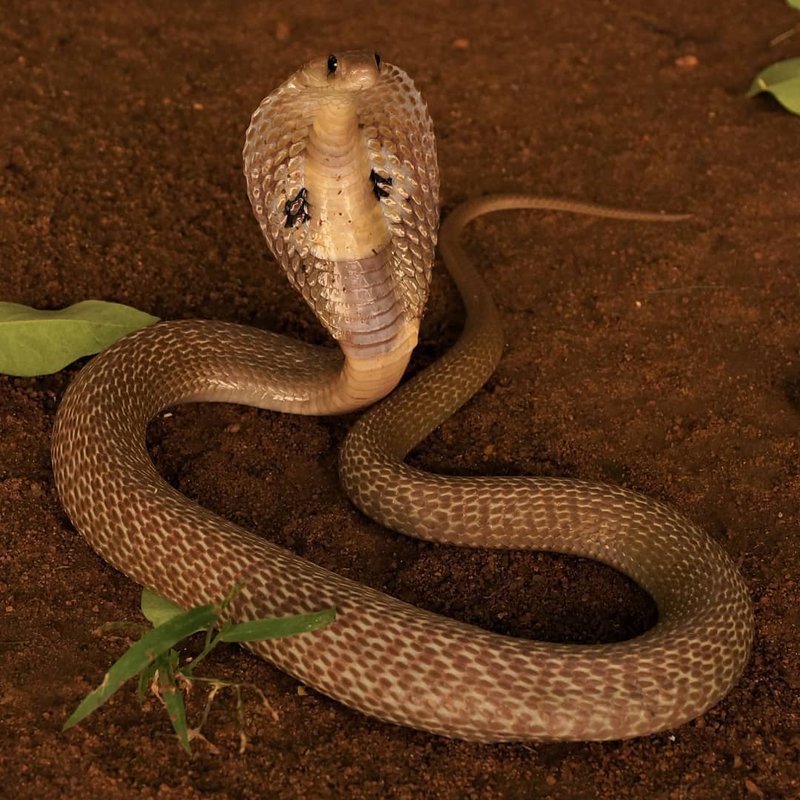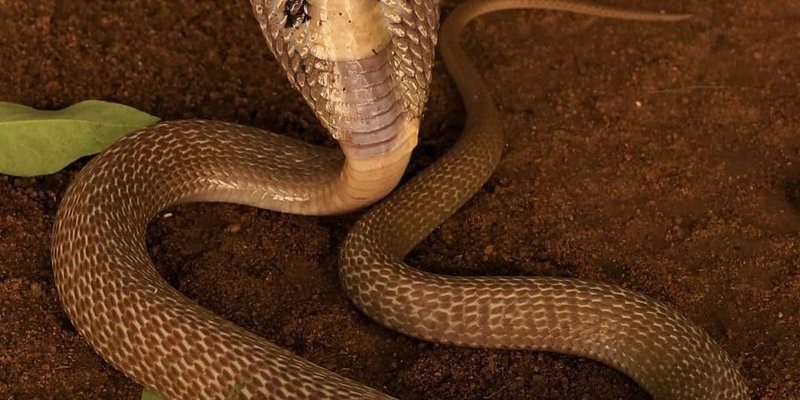
So, how do they manage to thrive where conditions can be tough? It’s a mix of clever adaptations, astonishing behaviors, and a dash of resilience. In this article, we’ll dive into the intriguing strategies that enable Indian cobras to face their challenging habitats. From their hunting tactics to their unique physical features, you’ll come to see these snakes in a whole new light.
Adaptations to Extreme Temperatures
The Indian cobra is a master at handling extreme temperatures, which is pretty impressive considering they can live in deserts, forests, and urban areas. You might wonder, how do they do it? Firstly, their scales play a crucial role. These scales are not just for protection; they also help regulate body temperature. During the hot day, cobras often seek refuge in burrows or under rocks to escape the heat. By staying hidden, they can avoid overheating.
At night, when the temperature drops, they come out to hunt. This nocturnal behavior is a smart move. Fewer predators are around, and it’s cooler for them to be active. You could say they’ve got their own little nighttime party going on—just them and the moon, searching for food. It’s fascinating how these creatures know when to be out and when to stay safe.
Another strategy they employ is basking. While they want to avoid the heat, a little sunlight is beneficial. By basking in the early morning or late afternoon, cobras can warm up their bodies after a cool night. It’s their way of soaking up the sun like we enjoy catching a few rays at the beach.
Camouflage and Defense Mechanisms
Indian cobras are known for their striking appearance, but it’s not just about looks; it’s about survival. Their ability to blend into their surroundings is truly remarkable. When resting on the ground, the earthy tones of their bodies help them stay hidden from both prey and potential threats. This camouflage is like wearing a natural disguise.
But if they are threatened, they have some tricks up their sleeve. The infamous hood of the cobra is not just for show. When they feel cornered, they spread their hoods wide, making themselves appear larger and more intimidating. It’s a way of saying, “Back off!” This display can often deter predators or perceived threats.
Another important defense mechanism is their venom. Indian cobras possess potent venom, which they use effectively to catch prey. But here’s the thing: they don’t want to waste their venom. So, they can control how much they inject. This means they can subdue prey without overexerting themselves. They’re not just powerful; they’re also strategic.
Diet and Foraging Strategies
Cobra diets are as varied as their habitats. These snakes are carnivorous, primarily feeding on small mammals, frogs, and birds. They can even take down other snakes. You might be wondering how they manage to find food in such diverse environments. It all comes down to their keen senses.
Their tongue plays a significant role in hunting. By flicking it in and out, they can pick up chemical cues in the air. This sense of smell helps them locate prey from a distance. Once they spot dinner, they strike with blinding speed, injecting venom to immobilize their meal. It’s like a well-rehearsed dance of survival.
Moreover, Indian cobras are also known for their patience. They don’t rush their hunts. They can spend hours waiting quietly until the perfect moment arises. This strategy increases their chances of a successful catch, especially in environments where food might be scarce.
Reproductive Strategies in Adverse Conditions
Reproduction can be a challenge in harsh environments, but Indian cobras have adapted well. Females typically lay eggs in secluded areas to protect them from predators. These locations are usually warm and offer some humidity—perfect for nurturing the developing eggs.
Interestingly, Indian cobras can also store sperm for months, giving them flexibility in their reproduction timing. This means they can wait for the right conditions to mate, which is crucial when resources are limited. You could think of it as saving for a rainy day.
When the young snakes hatch, they’re already equipped to survive. They are independent from the get-go, making their own way in the world. This independence reduces the burden on the parents and allows for a better chance of survival for the hatchlings.
Adaptation to Urban Environments
As human populations expand, Indian cobras have shown remarkable adaptability to urban environments. They often find themselves living near agricultural fields, where food is abundant. For these snakes, it’s like finding a buffet in the city.
Their ability to thrive in urban areas is a testament to their resilience. Cobras can often be found slithering through gardens or hiding in piles of debris. Here’s the thing: while some might consider them pests, they actually help control the rodent population, which can be quite beneficial for local farmers.
However, living near humans comes with challenges, too. They must navigate encounters with people, pets, and vehicles. Their natural instincts kick in, so they’re generally cautious. You might see them fleeing at the first sign of danger, which is their way of staying safe.
Threats and Conservation Efforts
Despite their incredible adaptations, Indian cobras face various threats in the wild. Habitat destruction, climate change, and illegal poaching are significant concerns. As urban areas expand or agricultural practices intensify, cobras lose their natural habitats. It’s a worrying trend that affects not just them but the entire ecosystem.
Conservation efforts are ongoing, with organizations working to raise awareness about the importance of snakes in maintaining ecological balance. Education programs are crucial; the more people understand these creatures, the less fear and hostility exist towards them.
Protecting their habitats and ensuring safe passage for these snakes is vital. If we appreciate the role of cobras in nature, we can work towards a future where they flourish alongside us.
Indian cobras are incredible survivors, adapting to some of the toughest conditions on the planet. From their cunning hunting strategies to their impressive ability to blend into their environments, they’ve truly mastered the art of survival. Understanding these adaptations not only deepens our appreciation for these reptiles but also highlights the need for conservation.
By recognizing the challenges they face and the unique solutions they’ve developed, we can better appreciate the intricate web of life that includes not just cobras but all creatures that share our world. Let’s ensure that generations to come can marvel at their resilience and beauty. Whether you’re a nature lover or simply curious, the story of the Indian cobra is a powerful reminder of adaptability and survival in our ever-changing landscape.

